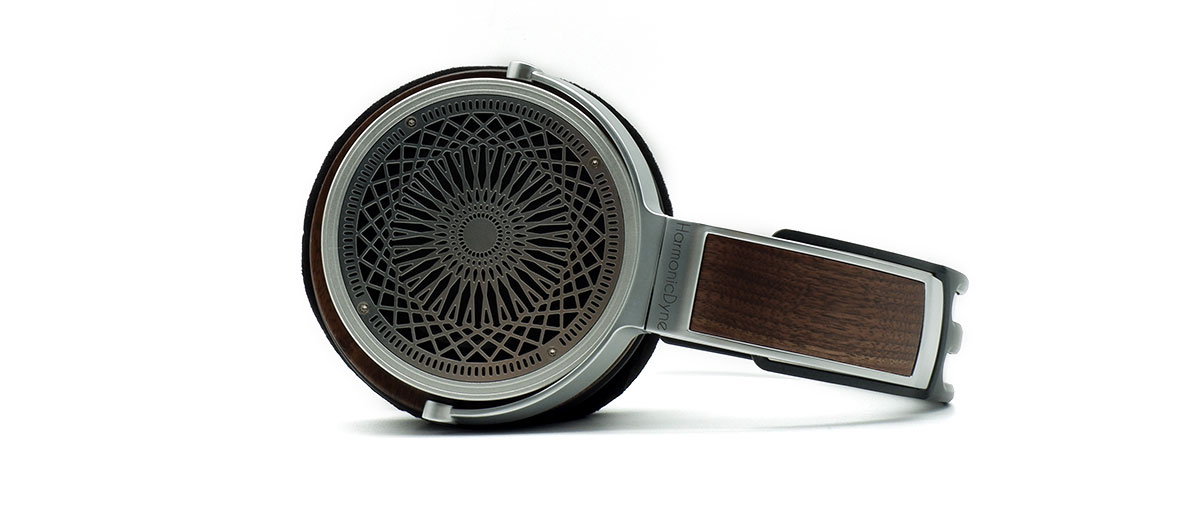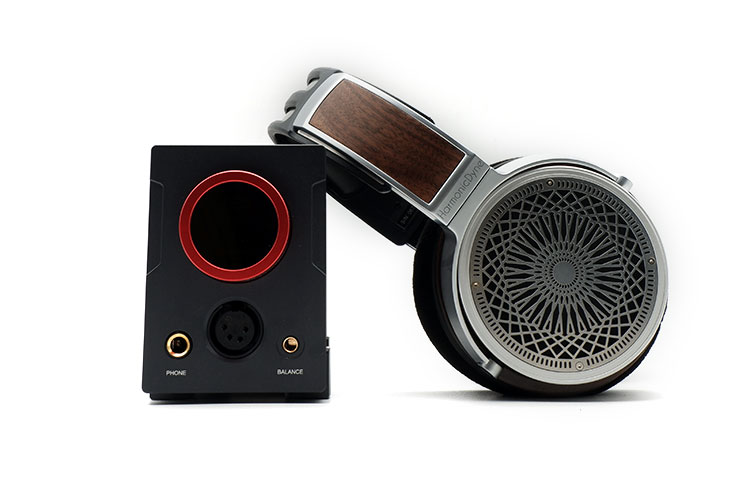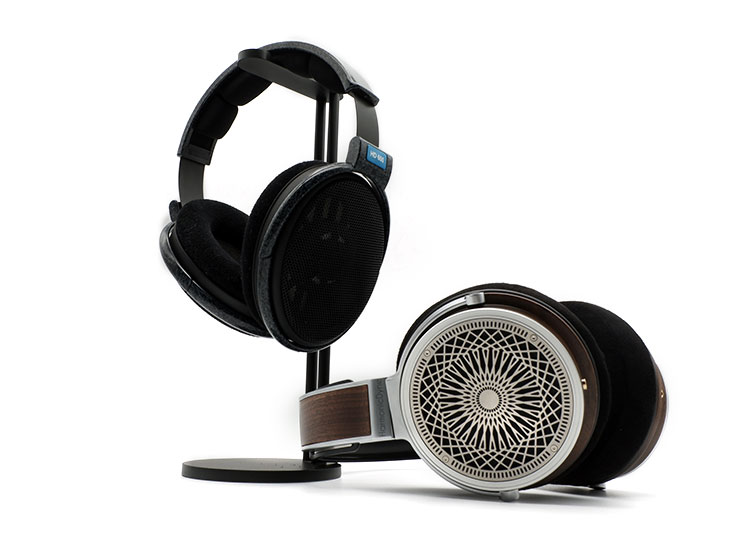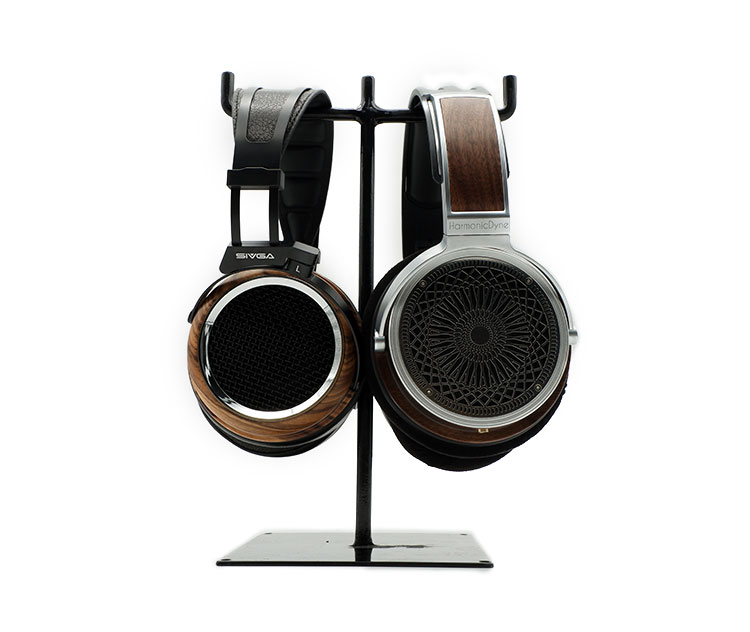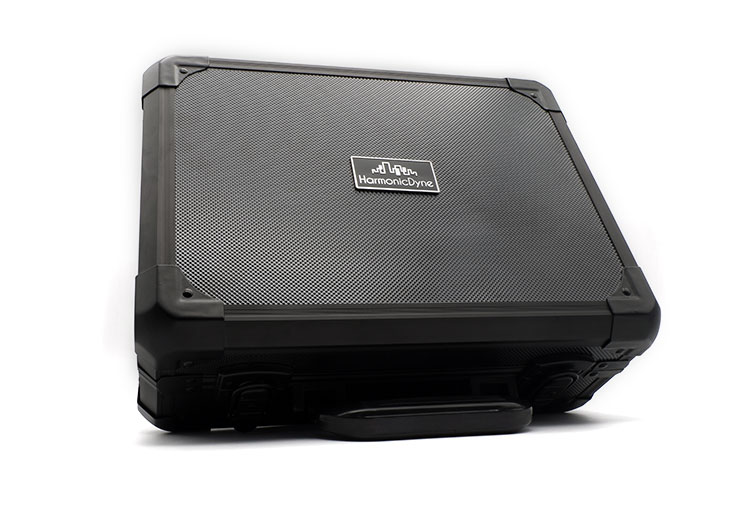Synergy
Power
The specs sheet indicates that Zeus only has an impedance of 64Ω and an SPL of just 100dB. These numbers put Zeus in the more efficient range of the spectrum. With my testing, the Zeus can easily be driven off of any source that has a headphone jack.
Powering it off my Burson Soloist, I only needed to bring it up to 3/100 on high gain, or 50/100 on medium gain to get it to the loudest comfortable listening levels. For reference, my Hifiman Ananda needed 9/100 on high gain.
Performance
Despite the Zeus being an easy-to-drive headphone, I would still say that a discrete headphone amplifier is still an absolute requirement. I first plugged the Zeus into my Burson Soloist 3X connected to the Denafrips Ares II.
Of course, the pairing provided enough resolution that the Zeus’ detail retrieval capability shone through quite well. However, details are not everything, the punchier nature of the Soloist 3X made the Zeus a bit too punchy for my taste, I guess it’s too much of a good thing.
I then tried the Zeus on my Auris Euterpe, and it performed very well. This pairing gave Zeus a touch more euphony in the midrange while having a measured amount of punchiness.
While the Euterpe smoothed over the energetic bassline, it also gave expanded the soundstaging capability of the Zeus, allowing it to expand beyond what most other solid-state amps allow.
I also tried the Zeus with the xDuoo XA-10, and I was pleasantly surprised that a warm class-A DAC/amp would pair well with the Zeus. The pairing allowed Zeus to take on a smoother and slightly more liquid character, while still retaining that accurate presentation.
This pairing, however, made the Zeus’ soundstage slightly more crowded, while making imaging a touch more accurate.
One of the most synergistic pairings that I was able to find was powering the Zeus off of a Topping A30 Pro connected to a Chord 2qute. This pairing allowed Zeus to present details very well, while not overly emphasizing a specific region. The treble with this pairing also shone through, giving Zeus that much-needed hint of treble sparkle.
Select Comparisons
Sennheiser HD600
Compared to the HD600, the Zeus comes in a much more elaborate package, where HarmonicDyne sends over a small suitcase to protect the Zeus, while the current retail packaging of the HD600 is a simple cardboard box.
Aside from the case though, the accessories that come with both headphones are pretty similar, where they both have detachable cables that come with some adaptors. The only additional option with the Zeus is that the stock cable is terminated in 4.4mm pentaconn, and attaching both adaptors to end up having a ¼” jack, in the end, makes the termination a bit too long.
Design
The cable on the HD600 is slightly more standard with a rubber coating. While the one that comes with the Zeus has a PVC coating from the splitter going into the headphones, and a cloth sheath from the y-split towards the 4.4mm pentaconn termination.
Both cables do their jobs well, and neither introduce any microphonics into the system, however, the cable of the Zeus feels quite a bit more premium.
The Zeus and the HD600 look very different. Where the HD600 has a more subdued look with its marbled blue(or satin blue for the new version) color scheme, while the Zeus is primarily silver with some wood inlays.
However, the composition of both headphones is actually quite similar. While the HD600’s earcups have a more limited range of motion, the earcups on the Zeus tend to make it more difficult to pick them up or put them on since the earcups tend to flop around.
The earcups on the HD600 seem to be larger because of the more elongated oblong shape, while the Zeus has a round earcup. In reality, both headphones’ earcups are equally spacious. The material used for both headphones is velvet, but the foam on the Zeus is a bit softer, so it formed a better seal around my ears.
Technical
The HD600 is a venerated classic, and it utilizes a standard dynamic driver with an impedance of 300Ω, and an SPL level of around 101dB/mW. The Zeus in contrast uses a more modern Beryllium dynamic driver that has a much lower impedance value of 64Ω, with an SPL of around 100dB/mW.
This makes Zeus a much easier to drive set of headphones. When switching over from the HD600 to the Zeus, I’ve always needed to turn down the volume significantly to volume match the 2 headphones.
Performance
The more bass-centric tonality of the Zeus gives it a stronger sub-bass presence and a more elevated mid-bass region.
However, each drum hit tends to feel a bit more rounded but controlled on the HD600, while the hits tend to feel a bit more impactful but slightly flatter on the Zeus. The Zeus also has a drier bass presentation compared to the HD600’s slightly more euphonic approach to the bass.
The midrange on the HD600 is markedly more forward, where vocalists are literally thrust in front of you. The vocal presentation on the HD600 is a touch more euphonic and liquid compared to the drier presentation on the Zeus. Instrument timbre is a bit more liquid and full-bodied on the HD600, while the faster drivers of the Zeus give them a drier but brighter presentation.
The treble sparkle on the Zeus generally balances out its more forward bass presence, however, the treble on the HD600 is a bit more forward. When it comes to cymbal hits, the treble is also a bit more controlled and crystalline on the HD600.
The treble on the Zeus, in contrast, is much faster and drier and actually leans towards a tinny timbre, which can be improved with a smoother tube amp.
The soundstage on the HD600 feels more infinite compared to the large room approach on the Zeus. However, the placement of the images within the soundstage is a bit wider on the Zeus, where images are more coherently pushed further out.
Both headphones can properly form a center image, but the HD600 can form more images between the center and both the extreme left and extreme right. The space between the instruments is more well defined with the HD600, where the images are just more vivid and compact.
Sony MDR-Z7
Being Sony’s previous flagship, the Z7 comes with 2 cables instead of 1, a single-ended cable, and a balanced cable terminated in dual 3.5mm connections that are mainly used with Sony’s own portable amplifiers at the time.
This balanced connection is not as popular today, so the 4.4mm pentaconn termination that the Zeus comes with by default makes much more sense in the current market.
Although the Z7 doesn’t come in a carrying case, the packaging that it comes in is equally premium. The presentation box of the Z7 is lined in satin, with foam inserts that ensure that the Z7 stays firmly in place while it’s in storage and transport.
Design
The top of the headband on the Z7 is similarly soft as the one on the Zeus. However, the Z7 comes with stock leather pads which are equally soft as the Zeus’. However, the holes in the earpads are slightly larger on the Zeus than on the Z7. So my ears sometimes end up touching the walls of the earpads of the Z7, which never happens with the Zeus.
The adjustment mechanism on the Z7 is a bit smoother than the Zeus’, and the adjustment mechanism on the Z7 seems to be a bit more robust since the headband extensions are made of a solid piece of metal instead of the sheet steel metal sliders on the Zeus.
The Zeus’ earcups articulate in all possible directions, while the one the Z7 only articulates in a more limited range, which makes it a bit more manageable when I pick the headphones up.
Technical
The biggest difference between the 2 headphones is that the Z7 are closed-back headphones, while the Zeus is definitely an open-back headphone. The Z7 has 2 vents on each earcup though, so it could loosely be classified as a semi-open back headphone?
The Z7’s drivers are larger at 70mm in diameter, compared to the 50mm drivers on the Zeus. Sony also uses a special technology on the Z7’s drivers, by coating the Z7’s LCP drivers with aluminum, which gives the drivers a more consistent response across the entire frequency spectrum.
The impedance and SPL of the two headphones are actually close, where the Z7 has a 70Ω impedance and a 103dB/mW SPL, while the Zeus has a 64Ω impedance and 100dB/mW. What this translates to in real life is that they play at about the same loudness for any given amp setting.
Performance
The most striking similarity between these two is that they both have a heavy-handed bass response. The sub-bass on both is equally expansive, however, the mid-bass region on the Zeus is slightly more pronounced and forward.
Drum hits on the Z7 have a more rounded character while the drum hits on the Zeus sound more like a splat in comparison with a drier bass response when compared to the Z7.
Vocal textures are slightly more smoothed over on the Z7, while the Zeus has a more matter-of-fact type of presentation. Although the Z7 and the Zeus have about equal midrange quantity, the midrange sounds slightly more pushed back on the Zeus, while the Z7 is slightly more forward. There is a lot more sweetness and euphony on the Z7 though.
Both headphones definitely stay away from being too bright, and they manage to do so very well. The treble levels on the two headphones are comparable, but the treble presentation is not entirely the same.
The Zeus has a cleaner more controlled approach to the treble, while the Z7 has a generally more smoothed-over approach to prevent it from being too bright. This results in touch more sparkle with the Zeus, which it actually needs a bit more as a counterbalance to its more elevated bass response.
Surprisingly, the Z7 manages to be equally as expansive as the Zeus despite the Z7 being a closed-back headphone. However, when it comes to the location of the images within the soundstage, the images seem to be more spaced out and pushed back appropriately on the Zeus.
Image clarity and definition are actually more accurate with the Z7, where the images are more coherent, and distinct from each other.
SIVGA Phoenix
Design
With the much smaller box, and leather hard shell carrying case, the Phoenix looks more like a transportable headphone, than a desktop headphone that happens to have a really nice case.
Looking at the headphones themselves, the Phoenix uses a suspension headband system, instead of the more traditional adjustable headband on the Zeus.
The available adjustments on the Phoenix are on the smaller side though, since I’ve had to max it out in use, while I still have around 3 notches on each side for the Zeus. They both use some wood, but the wood on the Phoenix looks a touch more integrated into the design compared to the inserts on the Zeus.
The Phoenix comes with a 3.5mm cable with a ¼” adaptor by default, which further reinforces the impression that it’s meant for transportable use. The Zeus on the other hand comes with a 4.4mm pentaconn connection by default, so it seems to be designed more for desktop use.
The earpads on the Phoenix are a hybrid design, while the Zeus comes with velour earpads. Both end up quite breathable though, so they’re equally comfortable. However, the holes in the earpads are much smaller than the ones on the Zeus, making the Phoenix border on an on-ear design, as opposed to the more spacious over-ear design on the Zeus.
Technical
The Phoenix comes in at an impedance of 32Ω, and an SPL of 103dB/mW, this makes it even easier to drive than the already manageable Zeus. Despite the much smaller frame of the Pheonix, it houses the same size 50mm driver.
The dynamic drivers on the Zeus have Beryllium in them, while the ones on the Phoenix are made of an ultra-thin polycarbonate diaphragm.
Performance
The first thing that I notice when listening to the two headphones is that the Phoenix is strikingly more open. The soundstage that it provides is immediately more expansive, compared to the large room feel on the Zeus.
The bass on both headphones is surprisingly deep, both having a very environmental sub-bass presentation. The mid-bass on the other hand is immediately more elevated with the Zeus.
However, it’s surprisingly clearer than the slightly more smeared mid-bass presentation on the Phoenix. Drum hits are more immediate, and have a bit more texture on the Zeus, while drum impacts are more rounded but glossed over on the Phoenix.
Both headphones have a pushed-back vocal presentation, however, it’s a touch more pushed back with the Zeus. It has a drier, more honest, but highly resolving vocal presentation, while the Phoenix has a bit more euphony infused into the vocals.
Instrument timbre is a bit warmer on the Phoenix, giving instruments such as violins and cellos a more gentle and flowy character.
Cymbal hits end up being a bit more detailed on the Zeus, with the leading edge of the impact being more defined. The Phoenix in contrast ends up having a more liquid presentation, with a bit more treble shimmer.
Staging
While the Phoenix is much more open, both end up playing equally wide. The center image is a bit more natural on the Phoenix though, since it manages to push the center image a bit further forward, rather than the more in my head presentation on the Zeus.
Instrument separation is about equally vivid on both headphones, where there are separate images within the soundscape, but some of them may overlap and blur together. The more detailed but drier character of Zeus leads me to believe that it would benefit more from a tube amp than the Phoenix.
Our Verdict
HarmonicDyne is a headphone that came as a surprise to me from the moment that it arrived with me. The accessories that come with it, such as the small suitcase, the balanced cable, and included adaptors are virtually unheard of at its price point.
The headphone itself is very comfortable and sturdy once it’s worn, but it could do some refinement with its grills and more restrictions in the earcup articulation.
The soundstage is fairly wide for darker headphones, but instrument separation and dynamic range may be lacking at times. Tonally, Zeus lives up to the god of thunder that it’s named after. It has a thunderous bass region, however, what’s special is that it maintains control over that bass region.
Despite having a slightly darker tuning, Zeus manages to have a generally good tonal balance between the bass and the treble region making it an exciting and energetic headphone.
HarmonicDyne Zeus Specifications
- Drivers Φ50mm Beryllium Dynamic
- Acoustic Architecture Open back
- Input Impedance 64Ω
- SPL 100+3dB
- THD ≤0.2% ( 1000Hz, 254mW)
- Cables OCC cable, 150cm
- Ear-cups Walnut wood
- Ear-pads Nano velvet
- Product Dimensions 200mm*180mm*100mm
- Product Weight about 380g

